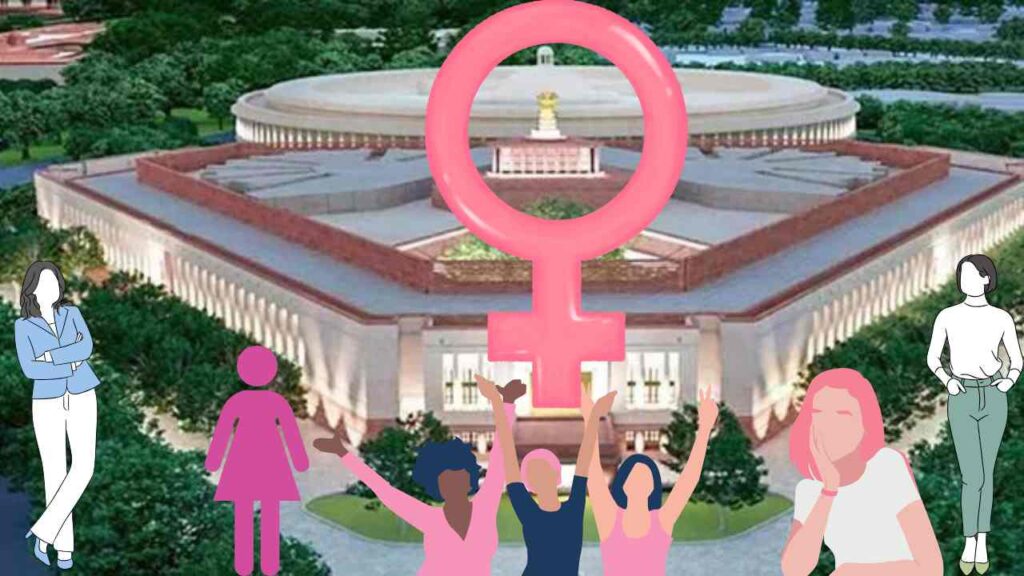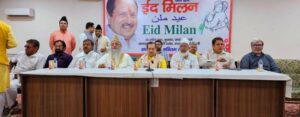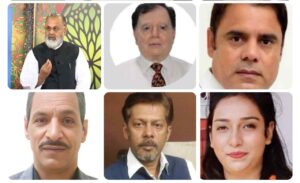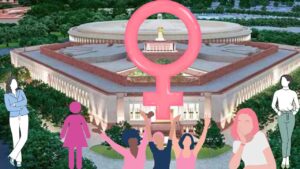Beyond Tokenism: The Real Challenges of Women in Politics

In recent years, there have been significant changes in the ruling center of the country to increase the participation of women in the heavily male-dominated Parliament. While more women than ever are being elected to parliaments across the world, equality is still a long way off, and the current progress is far too slow.
Women running for elections face multiple challenges, including addressing discrimination or cultural beliefs that limit women ‘s role in society, balancing private, family, and political life, gaining support from political parties, and securing campaign funding. They may also face violence, harassment, and intimidation. Some women may even be dissuaded from running for office, leaving men in positions of power.
Change is possible only if there is political commitment and adequate legal and policy frameworks are in place to provide a level playing field for both women and men
 [Jemamani Soren, a former local government representative from Odisha, India, is seen speaking on women-led development in New Delhi. – Photo: UN Women/Ruhani Kaur.]
[Jemamani Soren, a former local government representative from Odisha, India, is seen speaking on women-led development in New Delhi. – Photo: UN Women/Ruhani Kaur.]
Women’s Reservation Act of 2023: A Symbolic Gesture or a Significant Stride Towards Empowerment?
September 19, 2023, a “historic day”, when Prime Minister Narendra Modi urged the Opposition to unanimously pass the Bill – ‘Nari Shakti Vandan Adhiniyam’ – that has been hanging for nearly three decades.
On September 21, 2023, Indian legislators passed the first legislation considered in the country’s new Parliament building: the Women’s Reservation Bill, 2023. The bill, which passed in both houses of Parliament almost unanimously—with just two votes against—will ensure that women occupy at least 33 percent of the seats in state legislative assemblies and the Lok Sabha, the lower house of Parliament.
The new legislation requires that, in each election, 33 percent of seats in the assemblies and the Lok Sabha be assigned to only female candidates. The bill became law after receiving the assent of the President of India Droupadi Murmu.
| Represtation in Parliament | Total | Women candidates |
| Lok Sabha
|
542 | 78 |
| Rajya Sabha | 224 | 24 |
[statistics before the 2023 reservation bill- Ministry of Parliamentary Affairs]
Once the Women Reservation Bill 2023 was passed, women’s representation in Lok Sabha increased by 5 percent in the first Lok Sabha assembly to 15 percent in the current assembly.
Currently, 15 percent of Lok Sabha MPs and 13 percent of Rajya Sabha MPs are women.
Among parties with more than 10 seats in Lok Sabha, 42 percent of BJD MPs and 39 percent of TMC MPs are women (BJP -14 percent), In Rajya Sabha, 17 percent of INC MPs are women. Chhattisgarh has the highest representation with 18% women MLAs, while Himachal Pradesh has just one woman MLA, Mizoram has none and in the capital, Delhi is 10%.
NO STATE HAS MORE THAN 20% WOMEN REPRESENTATION IN ASSEMBLY.[ statistics from – PRS Legislative Research (“PRS”)]
Why less ladies in the Lok Sabha?
Gender disparity remains a significant issue across various sectors, yet the least progress has been made in narrowing the gender divide in political representation. Worldwide, women comprise merely 22 percent of lower-house parliamentarians, with India’s representation standing at 10.8% in the recent Lok Sabha. Although this situation has slightly improved in India over the past three election cycles, globally, it has nearly doubled from 11.7% in 1997. Interestingly, this period has also witnessed numerous countries implementing diverse quota policies.
Part of this problem stems from the adverse sex ratio among electors, women are more likely to contest elections in backward states like UP and Bihar where the sex ratio is skewed against them, making them an electoral minority compared to men. This implies that, increasingly, the average Indian voter is male and women are less likely to win elections in such states, as male voters don’t vote for women.
The sex ratio of voters (SRV), the number of women voters to every 1,000 men voters, is an important metric for assessing the gender bias in electoral roles. It is quite like the population sex ratio (PSR). According to a study by Mudit Kapoor and Shamik Ravi, authors of Women Voters in Indian Democracy: A Silent Revolution, there has been a stunning increase in India’s SRV from 715 in the 1960s to 883 in the 2000s. By 2019, it had risen to 928.
Considering the Women’s Reservation Bill, which aims to reserve 33% of Parliament and state legislative assembly seats for women, one must question the readiness of Indian political parties to nominate more female candidates.
As per a report by the International Institute for Democratic and Electoral Assistance, political parties hold a more significant influence than voters in granting access to political positions across various systems and regimes.
In a recent study by Brookings India titled “Women in Party Politics,” we analyzed data from the Election Commission on women candidates in Lok Sabha elections and investigated the role of women leaders within Indian political parties.
A study by The Times of India in 2014, found that political parties had failed to nurture women leaders, and their claimed support for the Women’s Reservation Bill is not reflected in either their candidate lists or party apparatuses.
The lack of women’s political representation in India is primarily due to unsupportive party structures. Across various political parties, women are underrepresented in leadership positions, often confined to women’s cells.
Despite constitutional provisions for gender-based affirmative action, such as the Indian National Congress’s 33% reservation for women in party committees, these rules are rarely met in practice. For example, only five out of 42 members of the Congress Workers’ Committee and six out of 57 All
India Congress Committee (AICC) members are women. Similar situations exist in other parties like the Trinamool Congress, Aam Aadmi Party, and the Communist Party of India (Marxist).
The Bharatiya Janata Party (BJP) has shown some success with internal reservations, but women still constitute only 11% of its ticket holders.
The passage of the Women’s Reservation Bill would have minimal impact without significant internal reforms within Indian political parties, as it would require a healthy pipeline of women leaders to fill the newly created seats. Failure to address this issue may lead to tokenism and the perpetuation of political dynasties.
India needs to address the fact that representation of women in politics and ruling the country is important for more unbiased and significant growth, India has a history of having some incredible women leaders starting from Indira Gandhi to Smriti Irani, who has excellently led the country despite all the challenges and difficulties.
Lok Sabha Elections 2024: How Many Women Candidates Did Major Political Parties Field This Time?
Over 85 lakh first-time women voters will participate in this year’s election. But how many women candidates did major political parties like BJP, Congress, and TMC field so far for contesting Lok Sabha elections?
Women have been the major focus of political parties throughout the state assembly elections last year and general elections this year. Making promises like free public transport, jobs, cylinders, and 200 units of free electricity, political parties have been banking on welfare programs aimed towards women, who are the ‘world’s poor’, according to the United Nations.
The Bharatiya Janata Party (BJP) has announced 267 candidates for various constituencies, out of which 42 are women, representing 6.3 percent, female candidates include Shobha Karandlaje, who previously represented Udupi Chikmagalur and is now running from North Bangalore, and Smriti Irani, the Minister of Women and Child Development, who will contest from Amethi again after her successful 2019 election against Congress leader Rahul Gandhi.
Indian National Congress – Out of 82 candidates the Congress party has announced 6 female candidates out of its first and second lists, which represents a 12% female participation. Notable among them are Jyotsna Mahant, who is contesting from the Korba Lok Sabha seat in Chhattisgarh against BJP’s Saroj Pandey, and Geetha Shivarajkumar, who will be competing against sitting MP BY Raghavendra in Shivamogga, Karnataka.
In contrast, the Trinamool Congress has included 12 female candidates in its first list for West Bengal, accounting for 3.5% of the total announced candidates. Among them, Mahua Moitra, the TMC leader, has been chosen for the Krishnanagar seat, a constituency she previously won in 2019. Additionally, Sujata Mondal Khan will be running against her ex-husband and current BJP MP, Saumitra Khan, in the Bishnupur seat.
“The Women’s Representation Bill in 2023 is a vital step towards ensuring a more inclusive and diverse parliament that truly represents the Indian population.” As we approach the Lok Sabha elections in 2024, it is crucial to recognize the ongoing efforts and challenges faced by women in politics. By fostering a supportive environment and addressing the barriers that hinder women’s participation, we can work towards a future where the Indian Parliament reflects the diverse voices of its citizens. We can make the assembly equal for all in a literal manner, it is about acceptance and giving opportunities to the worthy – in recent elections we have some prominent women candidates, but I believe it is just the beginning and we have a long walk ahead in this journey.
By Dhruvi Suri, Christ University (In guidance of Nipunika Shahid, Assistant Professor, Department of English and Cultural Studies, Christ University, Delhi NCR Campus)






